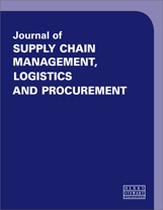Supply chain resiliency: Absorb versus respond
Abstract
Global supply chain shocks are nothing new; history is littered with examples of abnormal demand patterns or supply disruptions, with the recovery from COVID-19 being the most recent. This paper explores strategies for building resiliency into supply chains by investing in capabilities to absorb demand and supply shocks or create the ability to respond quickly and effectively to devastating supply chain events. Each supply chain is unique and may require a blend of strategies, depending on the infrastructure required to produce the products and distribute them throughout desired markets. With specific case studies and theoretical approaches, this paper provides a framework to utilise when planning for business continuity and supply chain resilience. It is shown that many resilient design principles can be embedded in day-to-day processes without too much effort, while for other more critical products more robust strategies must be planned. The core goal of this paper is to outline the differences between absorb and respond strategies and identify what type of strategy is better for what situation. Both authors have theoretical and practical experience developing plans for supply chain disaster recovery and optimising the investments needed to enhance resiliency and preparedness. Utilising this approach to supply chain design, building absorb capacity or responding rapidly to major disruptions, and by leveraging their collaboration with supply chain partners, companies can give themselves a competitive advantage.
The full article is available to subscribers to the journal.
Author's Biography
Danny Bloem is a senior supply chain consultant with a Master of Science in Transport and Supply Chain Management. He currently works at Slimstock as a Senior Consultant and Consultancy Manager leading the delivery team’s efforts of implementing their demand and supply planning and S&OP tool Slim4. In his career he has worked with many industries (healthcare, automotive, building materials, CPMG, wholesale and distribution and manufacturing) optimising their day-to-day processes and implementing strategic horizon planning processes.
Jason Rude is a seasoned supply chain executive with a Master of Science in Engineering Entrepreneurship and Innovation. His many years managing healthcare supply chains exposed him to the severity and impact of disruption to critical medical devices, observing first-hand the impact disruption can have on the delivery of patient care. Jason is a Lean Six Sigma practitioner, having served as sponsor or executive sponsor on more than two dozen impactful projects leading to more sustainable supply chains.
Citation
Bloem, Danny and Rude, Jason (2022, September 1). Supply chain resiliency: Absorb versus respond. In the Journal of Supply Chain Management, Logistics and Procurement, Volume 5, Issue 1. https://doi.org/10.69554/LWWN6194.Publications LLP
